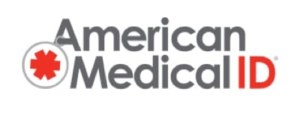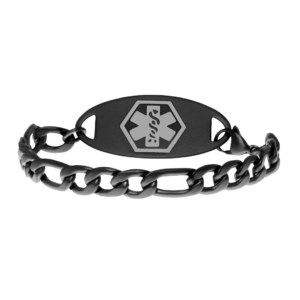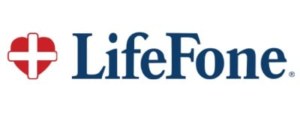Medical Alert Bracelets For Men
AgingInPlace.org keeps our resources free by working as an affiliate partner with some companies mentioned on our site. These partnerships or the commission we may earn do not affect our opinions or evaluations of the products we mention. Our reviews are solely based on our research methodology and from input from our AgingInPlace.org Advisory Board. Learn more about our ad policies.
Medical Alert Bracelets For Men
Products carousel
“Aging” is taking on a new meaning in the United States today. With older adults remaining in their communities and in the workforce longer than in previous generations, it’s important to support older adults through “active aging.” The World Health Organization (WHO) developed the Active Aging framework to support older adults by adding life to their years, with a focus on their quality of life. The WHO recognizes aging as a developmental stage, not a medical condition.
One important aspect of that model is a person’s physical environment. According to the 2019 Profile of Older Americans, about 28% of older adults living in their local community lived alone. This includes approximately 5 million men and 9.7 million women. It is important to support older adults with technology and assistive devices that could allow them to remain active in their communities and homes as long as possible. Whether an older man lives alone or at home with family, considering an option such as a medical identification bracelet can greatly impact his safety and well-being.
What Is a Medical Alert Bracelet?
Medical alert bracelets are designed to give emergency responders vital information about your health during a medical emergency. Typically, a medical alert bracelet will include your medical conditions, allergies, current medications you are taking, and an emergency contact number (also commonly referred to as in case of emergency or ICE). Listed below are some examples of information that might be on a medical alert bracelet:
- John Smith is 72 years old with a history of atrial fibrillation and peanut allergy. His medical identification bracelet could read: “JOHN SMITH, ATRIAL FIBRILLATION ON BLOOD THINNER, ALLERGY: PEANUT, ICE 777-555-3333.”
- Donald Lewis is an 84 year old with a history of type 2 diabetes and takes insulin. He has no allergies. His medical identification bracelet might read: “DONALD LEWIS, DM2 ON INSULIN, NO ALLERGY, ICE 555-444-2222.”
According to the U.S. Census Bureau’s American Community Survey, in 2018, 34% of people aged 65 and older reported having some type of disability (cognition, ambulation, self-care, hearing, or vision disability). Having a disability or chronic medical condition does increase your risk of requiring medical attention. For this reason, using a simple piece of medical jewelry could potentially save your life.
Three Best Medical Alert Bracelets for Men
There are many medical alert jewelry companies that offer a great variety of options for material, style, personalization and cost. It’s important that you review your options so that you get the most appropriate medical ID that fits your unique needs. Let’s review a few options that really stand out.
American Medical ID has produced personalized medical ID jewelry for 25 years. These medical IDs have helped medical professionals serve the public with prompt and appropriate care. The medical ID jewelry is made from high-grade metals, such as stainless steel, sterling silver, 10k gold-filled and 10k and 14k gold and titanium. They also offer medical ID jewelry made from leather and athletic silicone. With designs specifically made for men, American Medical ID has helped older adults avoid serious injuries by providing pertinent medical information in case of an emergency.
On the bestseller list for men is the Onyx Silicone Bracelet, which offers a sleek, athletic look at an affordable price. Starting at $17.95, this sweatproof medical ID bracelet would be a great option for men who still enjoy remaining physically active and exercising. It mimics the look of well-known “cause” bracelets, such as those offered by Livestrong. Another best seller for men is the Epic Leather Bracelet. Starting at $29.95, this stylish leather bracelet is a casual and stylish option of medical alert bracelet for men.
Road iD customers are usually those who enjoy the outdoors and engaging in physical fitness. Made with the sports community in mind, these medical alert devices can be customized. The company offers medical alert bracelets in a variety of styles. These styles include a stainless steel faceplate that you can personalize based on your medical needs. These stainless steel faceplates can be added to your shoe, which is ideal for running, walking, and hiking enthusiasts.
The faceplates can also be added to the band of your Fitbit or Apple Watch, so you can enjoy the aesthetic of your fitness tracker without having to add any secondary bracelets or bulky equipment. With affordable pricing options, depending on the material you opt for, prices range from about $29.99-$44.99.
This company was founded in 2001 for a young girl named Lauren, who was diagnosed with diabetes. She refused to wear the standard medical ID jewelry, arguing that it was “ugly” and drew attention to her illness. With this in mind, Lauren’s Hope Medical ID created an incredible variety of medical ID jewelry to suit users´ styles, without drawing excessive attention to their medical conditions or health status. With customizable options for men, women, and kids, Lauren’s Hope uses materials such as sterling silver, stainless steel, and aluminum with the option for different finishes, such as yellow gold, rose gold, black, and silver.
The company also offers silicone, stretch, and interchangeable bands. The pricing for the metal bracelets ranges from about $50-$75, and while this is a little more expensive than the other options discussed, it is still a great deal for a well-made medical ID bracelet. Lauren’s Hope also has a great customer service line, with options for exchanges and a one-year warranty, as well as sizing, measuring, and engraving guides to ensure you get exactly what you need.
What Is the Difference Between a Medical Alert Bracelet and a Mobile Medical Alert System?
Medical alert bracelets are a simple yet effective option for ensuring you receive appropriate medical care in case of an emergency. These bracelets relay your pertinent medical information to emergency responders in case you are rendered unable to communicate. But how can you be certain emergency care will get there in the first place?
A mobile medical alert system might be a better option for you if you need direct connection to a monitoring center or your emergency contacts. These systems consist of a help button (typically a pendant necklace or bracelet), which is directly connected to your mobile device. This allows a dispatcher from the emergency monitoring center to speak with you directly through your cell phone, whether you’re inside the home or out and about. The dispatcher can then send emergency responders to your exact location.
Mobile medical alert systems have features that help protect you in case of an emergency. Some of these features include:
- Fall detection—This feature uses technology known as accelerometers which automatically trigger an alert to the emergency call system if their sensors detect a fall or rapid change in the user´s position. The call button does not even need to be touched for this alert to be sent, which can be especially helpful if the user loses consciousness or hits their head.
- GPS—Global Positioning Systems, better known as GPS, is an important feature that will track your location. Once activated, the emergency call center dispatches the closest emergency personnel based on that GPS location. In addition to GPS tracking, some medical alert systems offer geo-fencing. This allows caregivers to receive alerts if their loved ones travel outside of an established “safe zone.” This feature can be especially helpful for those caring for loved ones with dementia or memory disorders.
- Environmental monitoring—This feature would include a sensor in the base unit which can detect life threatening changes in a person’s home environment, such as smoke or carbon monoxide. If the sensor detects any of these risky situations, the medical alert device will automatically contact the call center and emergency services will be dispatched.
Some well-known brands of mobile medical alert systems include Lively, Medical Guardian, and LifeFone, each of which are discussed in more detail below.
This mobile medical alert system is discreet, as it looks very similar to a smartwatch. If you’re a fan of fitness tracking and high-tech fashion, this would be a great option for you. It includes options like step counting and exercise tracking, much like a Fitbit. This bracelet syncs to an app on your phone. If you needed assistance, you would activate the response button on the bracelet, which would then connect you to an agent who can determine your exact location via GPS.
Pros
-
Waterproof
-
Battery operated
-
Discreet
-
GPS available
Cons
-
Automatic fall detection only available via necklace, not bracelet
-
Monthly subscription cost of $24.99-$49.99
This medical alert system includes a base station which is portable and can be clipped to your belt or used as its own alert device, as well as a bracelet or necklace (which can be interchanged). When activated, you are directly connected to the emergency response center.
Pros
-
Waterproof
-
Battery life of 5 days
-
Access to MyGuardian program to update caregivers
-
GPS available
Cons
-
Automatic fall detection available at an extra cost
-
Monthly subscription cost of $49.95
LifeFone offers three “on-the-go” plans, which also include the following in-home medical alert systems:
- At-Home & On-The-Go
- At-Home & On-The-Go, VIP
- At-Home & On-The-Go, VIPX
Pros
-
Waterproof
-
Battery life varies by product
-
Optional caregiver tools available at an extra cost
Cons
-
Automatic fall detection for an additional $10 per month
-
Monthly subscription cost of $39.95
-
GPS available for $9 per month
As you can see, mobile medical alert systems are more technologically advanced than a medical ID bracelet. Our experts have created a comprehensive review of mobile medical alert systems for you to peruse and decide if this is the right option for you.
Why Should You Wear a Medical Alert Bracelet?

In an emergency, first responders typically look first at a person’s wrist or neck in hopes that vital information regarding the person involved can be found there via medical alert device. Wearing this simple piece of technology could communicate critical information about your health to emergency responders in the circumstance that you cannot communicate that data on your own. Not wearing a medical ID can lead to a misdiagnosis of symptoms, delayed treatment, potential exposure to allergies, or unnecessary trips to the emergency room or hospital.
Not wearing a medical ID can lead to a misdiagnosis of symptoms, delayed treatment, potential exposure to allergies, or unnecessary trips to the emergency room or hospital.
How To Choose the Right Medical Alert Bracelet
There are some things to consider when choosing a medical alert bracelet:
- Your lifestyle—Do you enjoy participating in sports or vigorous activities? Perhaps opting for a material like silicone or rubber medical ID bracelet would be the best choice for you.
- Cost—What is your budget for a medical alert bracelet? You should only opt for a medical alert bracelet that you can afford.
- Materials—Have you worn jewelry in the past that’s ended up broken or damaged? If so, you should opt for a bracelet made with a more sturdy, durable material.
- Style—Do you prefer a casual or sophisticated style?
- Medical needs—Do you have medical conditions requiring frequent contact with caregivers or emergency services? If so, a mobile medical alert system might be a better option than a medical ID bracelet.
Why You Can Trust Our Reviews
At AgingInPlace.org, it is our goal to equip seniors and their family members with the most comprehensive and up to date reviews of assistive devices. We do this so that seniors— with help from their loved ones— can best prepare their home environments and successfully age in place. Collectively, our reviewers have spent over 1,700 hours conducting research through multiple modalities to provide you with valuable information on medical alert systems. The criteria considered most important were reliability and quality of the company’s monitoring center, and companies that do not provide 24- hour coverage, seven days a week are not considered in our top picks.
The gold standard in quality assurance of a medical alert system is a company’s designation as one of The Monitoring Association’s (TMA) Five Diamond Alert Monitoring Centers. You might see companies refer to this on their website as Central Station Alarm Association (CSAA) Five Diamond Alert Monitoring Centers. (TMA was formerly known as CSSA). Of the thousands of alarm companies in operation in the United States, roughly 200 earn TMA’s Five Diamond designation, a hallmark of quality emergency service.
You’ll also see companies advertise that they are “UL-listed,” which is another quality indicator. UL stands for Underwriter’s Laboratories, and UL-listed products have been tested by this independent, nationally recognized laboratory and determined to meet specific safety requirements.
Frequently Asked Questions
-
No, you do not need a prescription to purchase or wear a medical alert bracelet.
-
Yes. First responders are trained to immediately look for a medical alert ID bracelet when first arriving on a scene, as it can give them vital information about your health. If they don’t find a pendant necklace or bracelet, they might also check your wallet for a medical ID card or your phone for an emergency contact.
-
You can wear an ankle bracelet, but it might not be the best place to wear it. This is because you want the medical alert bracelet to be visible and easy to find in case of an emergency.
-
Things to include on a medical bracelet for someone with epilepsy would include the user´s name, diagnosis, any medication they are taking, allergies, and emergency contact. An example might look like:
– Michael Smith
– Epilepsy
– On Keppra
– NKDA (no known drug allergies)
– ICE: 555-333-2222 -
Typically, a medical alert bracelet will include the wearer´s chronic medical conditions, allergies, current medications, and an emergency contact number (also commonly referred to as in- case- of- emergency or ICE).
-
Some insurance companies will provide medical alert bracelets for free. Other insurance companies may require your primary care provider to complete a form to show the medical alert bracelet is medically necessary based on your specific health conditions. In that case, the company would cover the cost. Most medical alert/ID jewelry is eligible for coverage through a FSA /HSA account.
Other Medical Alert Guides And Medical Alert Systems That We Have Reviewed
- Best Medical Alert Systems
- Best Medical Alert Systems with Fall Detection
- Best Personal Emergency Response Systems (PERS)
- Best Medical Alert Systems With No Monthly Fee
- Best Medical Alert Watches for 2022
- Best Medical Alert Bracelets for Seniors
- Best Medical Alert Systems with GPS
- Medical Guardian Review
- Aloe Care Health Review
- MobileHelp Review
- Bay Alarm Medical Review
- Medical Alert Review
- GreatCall Review
- LifeStation Review
- LifeFone Review
- Philips Lifeline Review
- MobileHelp Smart Review
- Alert1 Review
- ADT Medical Alert Review
- Apple Watch Medical Alert Review
- GreatCall Lively Mobile Reviews
- Rescue Alert Medical Alert Review
- Life Alert Review
Learn More About Medical Alert Systems
- Does AARP Cover Medical Alert Systems?
- Is a Medical Alert System Tax-Deductible?
- Medical Alert Systems Covered by Medicare
- Who Should Wear a Medical Alert System?
- Pros and Cons of a Medical Alert System from Wal-Mart
- What Is The Cost of Medical Alert Systems
- Medical Alert Jewelry Options
WRITTEN BY
Danielle Pagano is a board certified Family Nurse Practitioner currently practicing Internal Medicine in rural Illinois. She has extensive experience in primary and long term care, including preventive medicine and complex chronic disease management. Danielle has participated in several medical mission trips, serving communities in Brazil, Kenya, and Ethiopia. As a working mother of three young children, Danielle appreciates spending her time outside connecting with nature while hiking or running, or relaxing with her husband.
View AuthorMEDICALLY REVIEWED BY
Jenny is an Adult-Gerontology Primary Care Nurse Practitioner in NYC with a passion for working with aging adults and their family members. Prior to her clinical training at Vanderbilt School of Nursing, she worked in business and medical research at Harvard Business School and Massachusetts General Hospital. As a Caregiving Coach at Givers, Jenny helps family members manage the financial, emotional, and educational stresses of caring for their loved ones who are aging in place.
View ReviewerDo you want to cite this page? Use our ready-made cite template.










